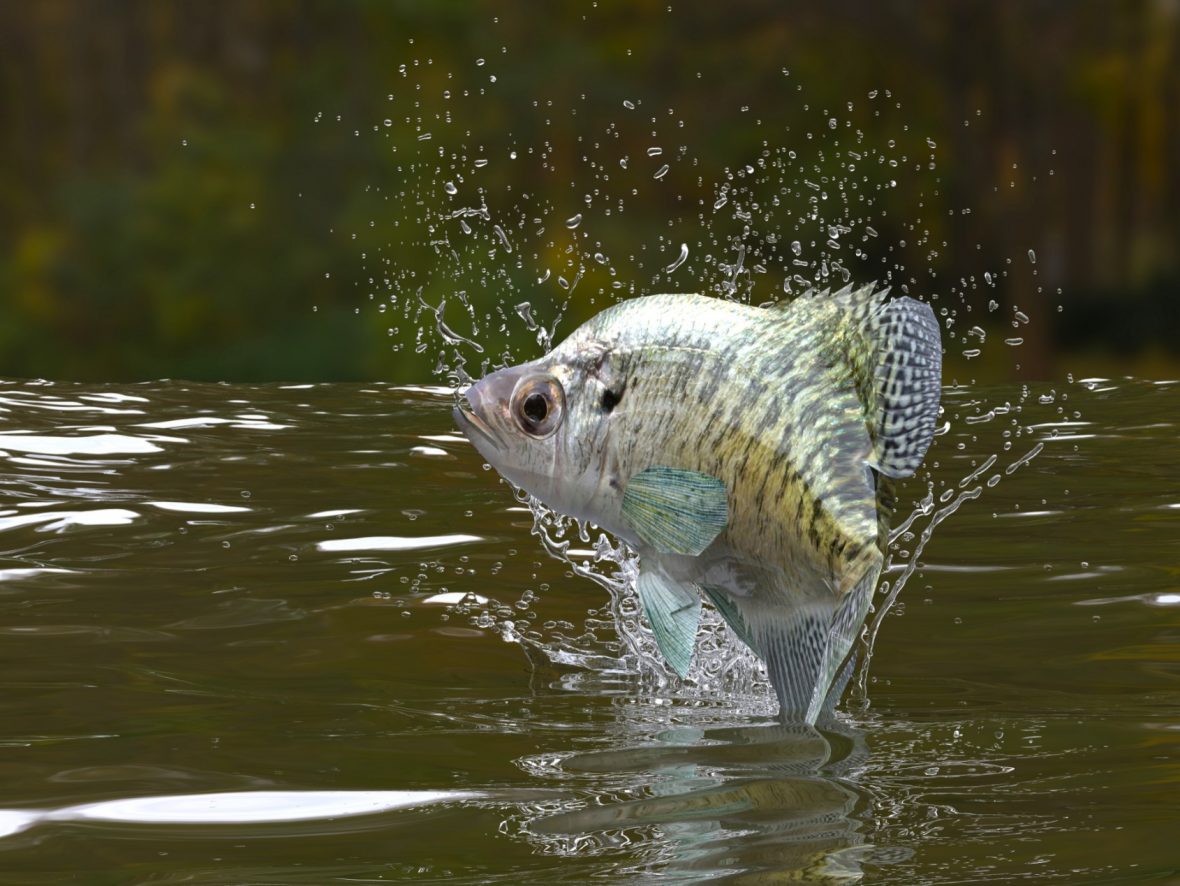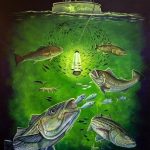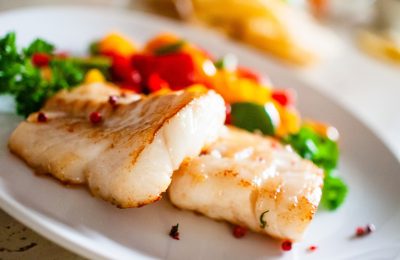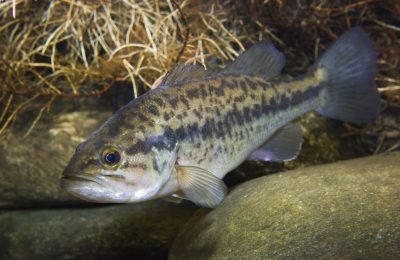Types of Crappie
Basics of Crappie Fishing
As one of the most popular and plentiful catches year-round in the United States, the crappie is truly a fish for all seasons.
Hailing from the sunfish family, crappie fish are small in size (with the biggest world record crappie weighing only 5 pounds) but numerous in number.
These fish often travel together in massive shoals. If one is caught, it can be assumed many others are floating around the same spot, ready to bite.
Crappie are fun and exciting to wrangle for fishers of any age or experience level. Given its size, this fish will struggle little against the rod, making for an effortlessly rewarding catch.
Here are the important ins and outs of how to catch crappie that any astute angler needs to know before heading out for a day on the water.

When and Where are Crappie Found?
The answer to “when?” is simple: every season is crappie season. The answer to “where” involves more explanation.
While this fish likely originated in the eastern half of the United States, large relocation efforts have now made these fish available in every contiguous state.
Ponds, rivers, reservoirs, and streams across North America are the crappie’s most frequented freshwater spots.
These fish are known to hang around shorelines and covered areas in an effort to evade potential predators.
However, the approximate locations where shoals of crappie may be found changes seasonally.
The most important crappie fishing tips revolve around locating these elusive swimmers.
Spring and Fall
During spring and fall, these fish stick to shallow waters. Weed beds, trees, gravelly banks, and brush piles near the shoreline offer this fish covered protection.
Spawning season lasts from March to June, making this the optimal time of year to cast a line and reel in copious amounts of crappie.
Fall is a trickier season to get any bites. It may shift from shallow to deeper waters throughout the day. Fishers may need to test different depths before discovering where the fish are biting.
Summer and Winter
Anglers are advised to move toward deeper waters in the hottest and coldest months.
Crappie tend to frequent bodies of freshwater ranging from 10 to 40 feet deep. Timber trees, channel humps, and river backwaters are its common retreats during these seasons.
Some anglers new to the game are surprised to learn winter is prime time for game fishing.
In frigid weather, crappie tend to mass together in compact groups. This allows for plentiful catches in no time.
It is crucial to remember that the colder the weather, the farther these fish will retreat into deeper waters.
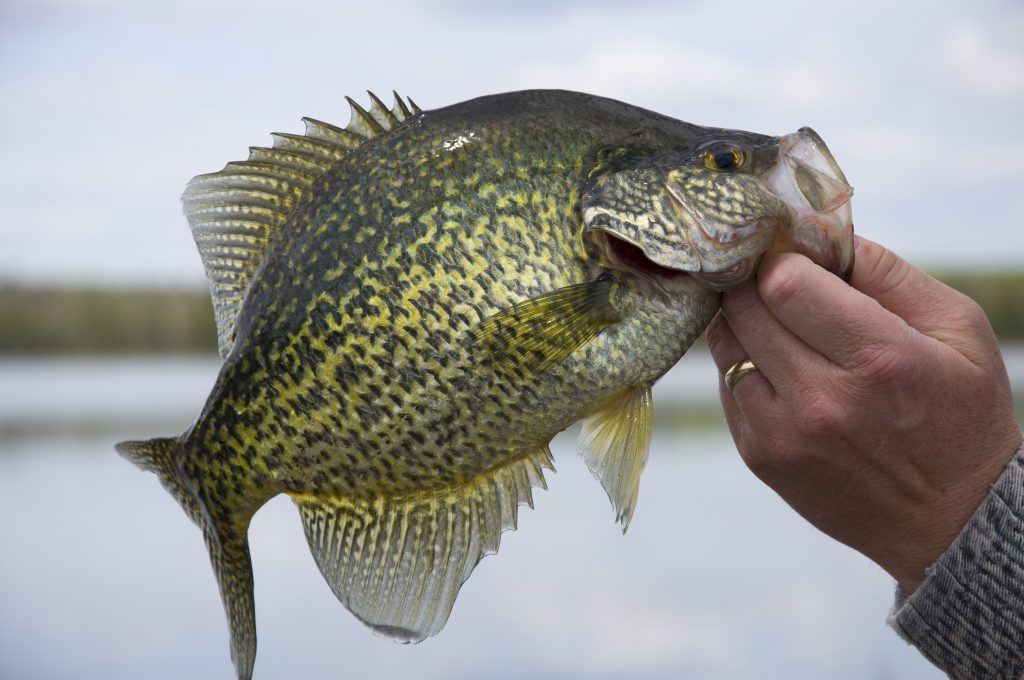
Best Crappie Lures and Rods
In addition to a well-stocked tacklebox of jigs, lines, bobbers, and hooks, owning a reliable rod is essential to a successful day on the water.
Since crappie are some of the easiest types of fish to hook, state-of-the-art gear is not a necessity. In fact, a simple cane pole can bring in fish all day long.
However, a more serious angler may opt for more technologically advanced gear, such as spinning or ultralight rods.
Some of the best crappie rods out there are made of high-quality graphite, such as those listed below:
- B’n’M Buck’s Crappie Graphite Jig Pole
- B’n’M Buck’s Best Ultra-Light Pole
- Bass Pro Shops Crappie Maxx Mighty Lite Crappie Pole
These are only a few of the premium rods available on the market.
Crappie Fishing Tips and Tricks
Here are the crappie fishing tips every in-the-know angler is using each season to land the biggest catches.
- One unwritten rule advanced anglers follow is to cast shallow during fall and spring, and cast deep in the winter and summer.
- One size does not fit all in terms of how to catch them. Vastly different approaches often bring in fish all the same, so it is important to experiment with tackle and technique to find what suits each individual fisher best.
- Smaller jigs are most efficient to hook this fish.
- Minnows are a crappie favorite when it comes to live bait.
- Crappie can be attracted by building coverings with branches, brush, and limbs in shallow areas of water.
- On average, they weigh less than a pound and measure between 5 and 10 inches long.
- Dusk and dawn are prime times to land these fish.
- Every state has differing regulations regarding fishing practices. Most anglers are required to obtain a fishing license before casting a line. It is vital to understand and abide by these rules to avoid fines.
These insider tips and tricks of how to catch crappie are sure to make for an exciting, success-filled day.
Common Crappie Types
Despite the diverse color variations and hybrids existing within this species, the main two types reeled in by fishers are the black and white crappie.
The names of these fish are not indicative of their appearance, since both can be either light or dark.
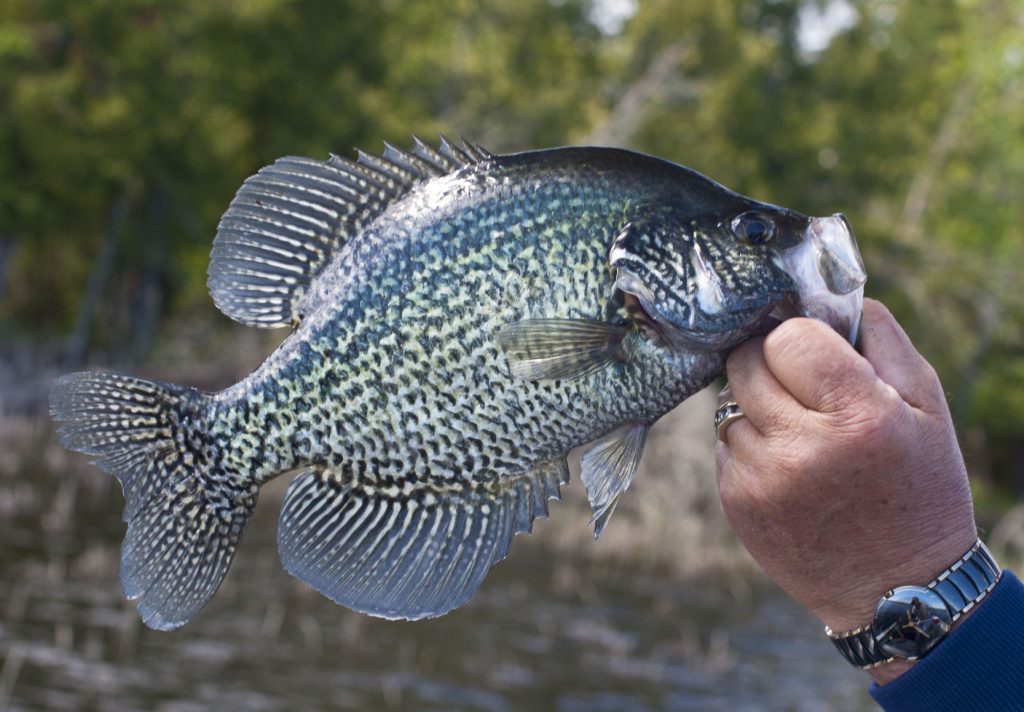
Black Crappie
Appearance:
A black crappie possesses uneven dark markings all over its body. It tends to be smaller in size and darker in color than its white counterpart. It also has up to 8 hard spines on its dorsal fin.
Habitat:
Black crappie favor the clear, cool waters of lakes and rivers. These freshwater fish also prefer to remain hidden in vegetation and under structures.
White Crappie
Appearance
The body of the white crappie, though similar to the black, is more elongated and generally lighter in color. Its dorsal fin, consisting of 5 to 6 spines, sits further back on its body. It is most identifiable by the vertical lines across its scales.
Habitat:
White crappie do not have a preference when it comes to habitat. It is known to traverse murky and clear waters equally.
How to Fillet a Crappie
After learning how to catch them, it is just as important to learn how to cook one.
When cooked correctly, crappie are some of the tastiest freshwater fish. A perfectly filleted and seared will produce crumbling, melt-in-your-mouth white meat.
The tools required are:
- Fillet knife.
2. Cutting board (or any hard, flat surface).
3. Spoon.
4. A place to dispose of the unwanted parts.
- After positioning the knife just under the pectoral fin, cut at an angle toward the backbone.
- Continue to cut in the direction of the tail. The knife should remain on top of the back fins.
- The fillet should be pushed away from the fish but still attached. Slice as close between the meat and skin as possible to retain the most meat. Remove the fillet.
- The fillet attached to the rib cage should be removed. Flip the fish and fillet the opposite side.
- The rib cage should then be cut out from each fillet, cutting as close to the ribs as possible.
- The fillets must be rinsed and then promptly froze or cooked.
Following this list of easy steps will make for an irresistibly scrumptious meal after a long day on the boat. While you’re eating that amazing crappie, check out the latest free fishing giveaway. Rusty Angler loves fishing, so we share the love with our readers and fishing enthusiasts all the time!


